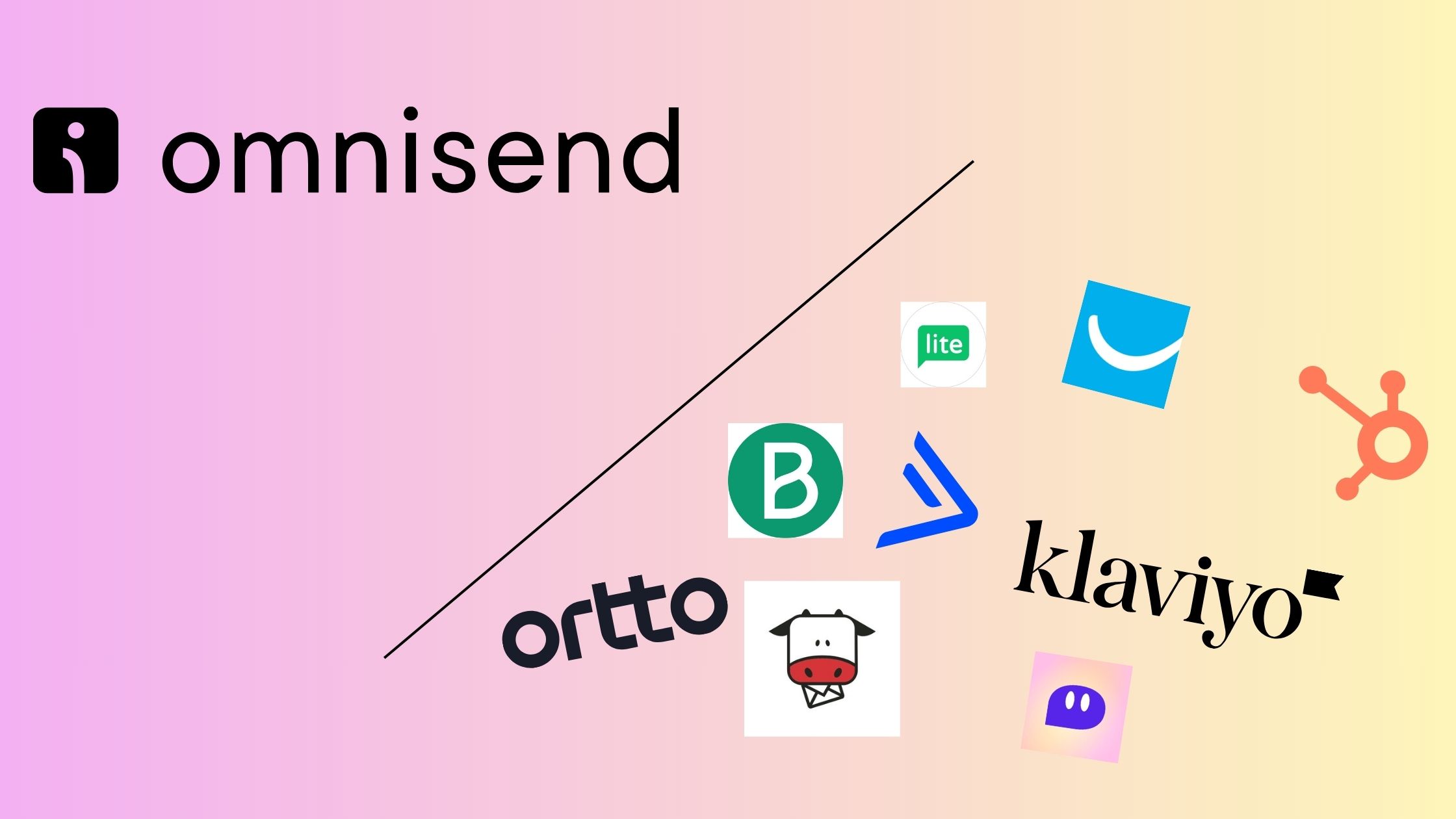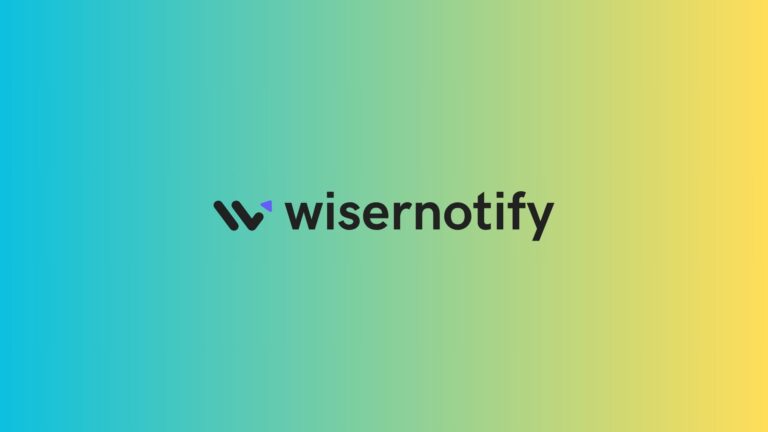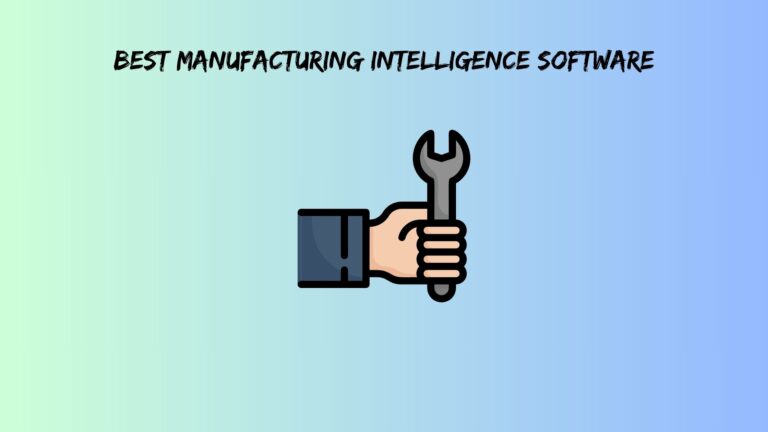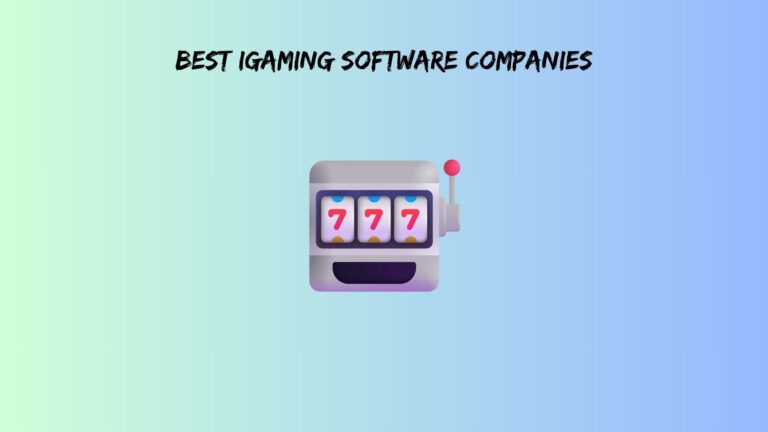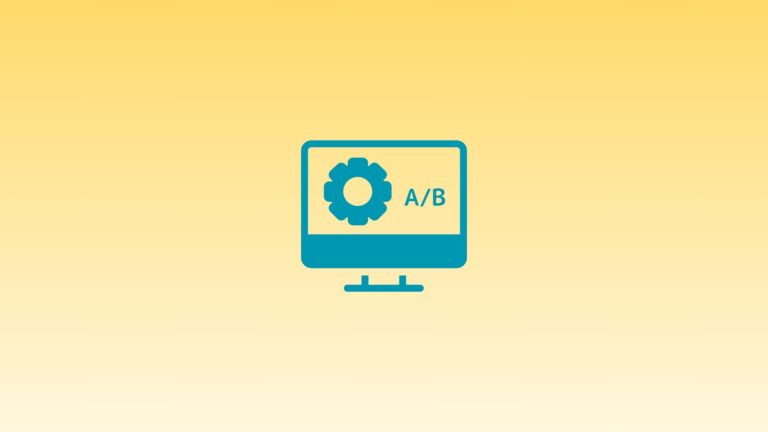Best Omnisend Alternative Platforms You Should Try Before Renewing Your Plan
Auto-renewal notifications hit different when you realize you’ve been overpaying for months. Omnisend just increased its pricing again, and frankly, its feature development has been crawling while competitors sprint ahead. Before you click “renew” out of habit, take a breath. These 9 alternatives might save you thousands while delivering better results.
Spoiler alert: The third option costs 70% less than Omnisend while packing more automation features.
Why Smart Marketers Are Jumping Ship from Omnisend in 2025
Omnisend pricing has become a moving target. What started as affordable email marketing now costs more than comprehensive marketing platforms. Meanwhile, their promised features arrive slower than holiday shipping.
Customer support quality dropped significantly as they scaled. Simple questions now require multiple tickets and endless back-and-forth exchanges. Additionally, their SMS pricing structure feels designed to confuse rather than clarify costs.
Integration problems plague users trying to connect with newer platforms. While Omnisend focuses on legacy systems, modern businesses need connections with emerging tools and services.
The automation builder looks impressive but lacks the depth serious marketers require. Complex customer journeys become impossible without expensive add-ons. Furthermore, their segmentation capabilities feel outdated compared to current market standards.
Feature bloat represents another growing concern. You pay for pop-up builders, landing page builders and webinar tools you never use. Most businesses need focused email marketing, not Swiss Army knife solutions.
What Makes an Email Platform Worth Your Money
Deliverability rates determine everything else. Beautiful emails mean nothing if they land in spam folders. Top platforms maintain relationships with major email providers and actively monitor sender reputation.
Automation workflows should handle complex customer journeys without requiring coding skills. Visual builders need drag-and-drop simplicity with professional-grade logic capabilities.
Segmentation granularity separates amateur platforms from professional tools. Creating targeted campaigns based on behavior, purchase history, and engagement patterns drives real revenue growth.
Testing capabilities must extend beyond basic subject line variations. Advanced platforms allow content testing, send time optimization, and audience splitting for meaningful insights.
Integration ecosystems determine how well your marketing stack works together. Native connections reduce data sync issues and eliminate costly middleware solutions.
Pricing transparency prevents nasty surprises during scaling. Hidden costs and sudden tier jumps can destroy marketing budgets without warning.
The 9 Best Omnisend Alternative Platforms
1. ActiveCampaign: Automation That Actually Works
ActiveCampaign builds customer journeys that feel personal rather than robotic. Their visual automation builder handles complex logic without requiring technical expertise.
Perfect for businesses running sophisticated nurture campaigns across multiple touchpoints. The platform excels at connecting email marketing with sales processes through integrated CRM functionality.
Pricing becomes more attractive at higher contact volumes compared to Omnisend competitors. Advanced features remain accessible without forcing expensive enterprise upgrades.
Machine learning optimizes send times based on individual subscriber behavior patterns. This feature alone can boost open rates by 15-20% without additional effort.
However, beginners might feel overwhelmed by the extensive feature set. The learning curve is steeper than simpler alternatives to Omnisend.
2. Klaviyo: Revenue Attribution Done Right
Klaviyo transforms e-commerce data into profitable email campaigns. Their analytics dashboard shows exactly which emails generate revenue rather than just vanity metrics.
E-commerce stores benefit from built-in product recommendation engines and abandoned cart recovery sequences. Revenue attribution tracking helps optimize campaigns for actual business growth.
The free tier supports 250 contacts with full feature access. This generous offering lets small businesses test premium functionality without financial commitment.
Predictive analytics identifies customers likely to make repeat purchases or churn. These insights enable proactive marketing strategies rather than reactive campaigns.
Nevertheless, Klaviyo focuses heavily on e-commerce use cases. Service-based businesses might find limited relevant features compared to dedicated alternatives.
3. Moosend: Premium Features at Startup Prices
Moosend delivers enterprise-grade automation at prices that make accountants smile. Their feature-to-cost ratio embarrasses more expensive Omnisend alternatives.
Growing businesses get advanced segmentation, behavioral triggers, and AI-powered recommendations without breaking marketing budgets. The platform scales affordably as contact lists expand.
AI-driven product recommendations come standard rather than requiring expensive add-ons. This feature typically costs extra on competing platforms.
Template variety covers most industries and use cases adequately. While not the largest library available, quality remains consistently high across options.
The main limitation involves brand recognition compared to household names. However, functionality and support quality often exceed better-known competitors.
4. GetResponse: Multiple Tools, Single Platform
GetResponse consolidates email marketing, landing pages, and webinar hosting into one subscription. This approach reduces tool sprawl and simplifies marketing operations.
Businesses wanting to eliminate multiple subscriptions find excellent value in the comprehensive feature set. Webinar functionality alone justifies the cost for many users.
Conversion funnel analytics track prospects from initial contact through final purchase. This visibility helps optimize entire customer acquisition processes rather than isolated campaigns.
Landing page templates integrate seamlessly with email campaigns. No external tools or complicated integrations required for complete marketing funnels.
The jack-of-all-trades approach sometimes means individual features lack the depth of specialized tools. Power users might need supplementary platforms for advanced capabilities.
5. Ortto: Customer Journey Intelligence
Ortto unifies customer data from multiple touchpoints into actionable marketing insights. Their platform excels at tracking complete customer lifecycles rather than isolated interactions.
SaaS and subscription businesses benefit from advanced user behavior tracking. The platform identifies expansion opportunities and churn risks through integrated analytics.
Transparent pricing eliminates hidden SMS costs and surprise charges. All features remain accessible within published pricing tiers.
Real-time behavioral triggers respond to customer actions across websites, apps, and email interactions. This comprehensive tracking enables sophisticated personalization strategies.
Being a newer platform means some integrations are still developing. Established businesses with complex tech stacks might need to verify compatibility.
6. Postscript: SMS Marketing Mastery
Postscript specializes in text message marketing with compliance features that prevent costly regulatory mistakes. Their SMS expertise surpasses general-purpose platforms.
Retail brands prioritizing SMS channels get specialized features like abandoned cart recovery via text. Advanced segmentation enables highly targeted message campaigns.
SMS pricing remains competitive without monthly minimums or surprise overages. Transparent credit systems help predict monthly costs accurately.
Compliance tools automatically handle opt-out requests and regulatory requirements across different states. This protection prevents expensive legal complications.
Email marketing capabilities are basic compared to dedicated platforms. Businesses needing advanced email features might require supplementary tools.
7. Brevo: Unlimited Sending Freedom
Brevo breaks the contact-based pricing model with unlimited daily email sending. High-volume senders find exceptional value in this pricing approach.
Businesses with engaged subscriber lists can send multiple campaigns daily without additional costs. This freedom enables aggressive testing and optimization strategies.
The integrated CRM connects email marketing with sales pipeline management. Lead scoring and sales automation features complement email campaigns effectively.
Template customization tools provide creative flexibility for brand-consistent campaigns. Design options accommodate both simple and complex layout requirements.
Customization sometimes feels restrictive compared to more flexible design platforms. Creative teams might need external tools for elaborate template designs.
8. HubSpot: Complete Growth Platform
HubSpot provides comprehensive inbound marketing tools with generous free tier access. The integrated approach connects marketing, sales, and customer service seamlessly.
Businesses ready for complete platform adoption benefit from unified customer data and a consistent user experience. Sales and marketing alignment becomes effortless with shared tools.
The free CRM includes contact management, deal tracking, and basic automation features. This foundation supports business growth without immediate financial commitment.
Reporting capabilities span entire customer lifecycles rather than isolated email metrics. Advanced attribution tracking reveals true marketing ROI across channels.
Complexity can overwhelm small teams accustomed to simple email marketing tools. The extensive feature set requires dedicated time for proper implementation.
9. MailerLite: Simplicity That Converts
MailerLite prioritizes user-friendly design without sacrificing important functionality. Their interface welcomes beginners while providing the tools that experienced marketers need.
Small businesses and content creators appreciate the intuitive drag-and-drop editor. Template creation happens quickly without design expertise or external help.
Pricing remains among the most affordable options for basic email marketing needs. Feature access doesn’t require expensive enterprise upgrades.
Automation capabilities handle common use cases effectively while maintaining simplicity. Welcome sequences, birthday campaigns, and re-engagement flows work smoothly.
Advanced segmentation options are limited compared to enterprise-focused alternatives. Large businesses might outgrow the platform’s targeting capabilities.
Feature Comparison: What Matters
Automation complexity varies dramatically across platforms. ActiveCampaign and Klaviyo offer sophisticated workflow builders, while MailerLite keeps things straightforward.
Deliverability performance remains crucial for campaign success. Most reputable platforms maintain similar delivery rates, but monitoring and optimization approaches differ significantly.
Integration availability determines how well platforms work with existing business tools. HubSpot and ActiveCampaign offer extensive native connections, while smaller platforms rely on Zapier integrations.
Pricing structures create different value propositions at various business sizes. Brevo’s unlimited sending benefits high-volume users, while MailerLite serves budget-conscious small businesses.
Customer support quality impacts daily platform experience significantly. Moosend and GetResponse maintain responsive support teams, while larger platforms sometimes struggle with ticket volumes.
Switching Platforms Without Losing Your Mind
Planning prevents migration disasters that destroy months of hard work. Create detailed documentation of current automation workflows, contact segments, and active campaigns.
Contact list exports require careful cleaning to maintain a deliverability reputation. Remove inactive subscribers and verify contact permissions before importing to new platforms.
Template recreation offers opportunities to improve design and messaging. Rather than copying existing templates exactly, consider refreshing creative approaches.
Automation workflow rebuilding takes time but enables optimization opportunities. Document current performance metrics to compare effectiveness after migration.
Testing protocols should verify all functionality before launching campaigns. Send test emails to various email providers and check automation triggers thoroughly.
Sunset timelines prevent double-billing while ensuring continuous service. Overlap subscriptions briefly to verify everything works correctly before canceling old platforms.
Also read: Best Email Tracking System
Choosing Your Platform Based on Business Needs
E-commerce stores benefit most from Klaviyo’s revenue attribution or Moosend’s affordable automation features. Both platforms understand online retail requirements deeply.
SaaS companies should consider Ortto’s lifecycle tracking or ActiveCampaign’s sophisticated lead nurturing capabilities. These platforms excel at complex B2B sales cycles.
Content creators and small service businesses find MailerLite’s simplicity or Brevo’s unlimited sending most valuable. These options prioritize ease of use over advanced features.
Enterprise teams requiring comprehensive solutions might prefer HubSpot’s complete platform or ActiveCampaign’s advanced capabilities. These investments support long-term growth strategies.
SMS-focused brands need Postscript’s specialized features and compliance tools. General-purpose platforms rarely match dedicated SMS marketing capabilities.
Real Cost Analysis: Your Potential Savings
Switching from Omnisend to Moosend saves approximately $2,400 annually for businesses with 5,000 contacts. These savings increase proportionally with larger contact databases.
Hidden costs often emerge during platform scaling. Omnisend’s SMS charges and feature limitations create unexpected expenses that alternatives handle more transparently.
Feature-per-dollar calculations favor newer platforms like Ortto and Moosend. These companies offer competitive feature sets without legacy pricing structures.
Migration investments typically recover within 2-3 months through lower subscription costs. Additional savings come from improved automation efficiency and better deliverability rates.
Long-term growth projections show increasing savings as contact lists expand. Omnisend’s pricing tiers create steep jumps that alternatives handle more gradually.
Making Your Final Platform Decision
Business size and complexity determine which features matter most. Small businesses need simplicity and affordability, while larger operations require sophisticated automation capabilities.
Free trial strategies should focus on testing core workflows rather than exploring every feature. Identify 2-3 critical use cases and evaluate platform performance thoroughly.
Sales call questions should address long-term scaling costs and feature roadmaps. Understanding future pricing and functionality helps avoid repeated migrations.
Contract negotiations often yield better pricing for annual commitments. Most platforms offer significant discounts for longer-term agreements.
Implementation timelines should account for team training and workflow optimization. Rushing platform adoption often leads to suboptimal results and user frustration.
Frequently Asked Questions
Which Omnisend alternative offers the best value for small businesses?
MailerLite and Moosend provide exceptional value for small businesses. MailerLite excels in simplicity and affordability, while Moosend offers advanced features at competitive prices. Both platforms scale well as businesses grow without forcing expensive upgrades.
Can I migrate my automation workflows from Omnisend to other platforms?
Yes, but workflows require manual recreation since platforms don’t share compatible formats. Document your current automation logic, export contact segments, and rebuild workflows in your new platform. This process often improves campaign performance through optimization opportunities.
How do SMS costs compare between Omnisend and its alternatives?
Postscript typically offers more competitive SMS pricing with transparent credit systems. Brevo includes SMS in higher-tier plans without separate charges. Omnisend’s SMS pricing often surprises users with unexpected costs, making alternatives more predictable for budget planning.

